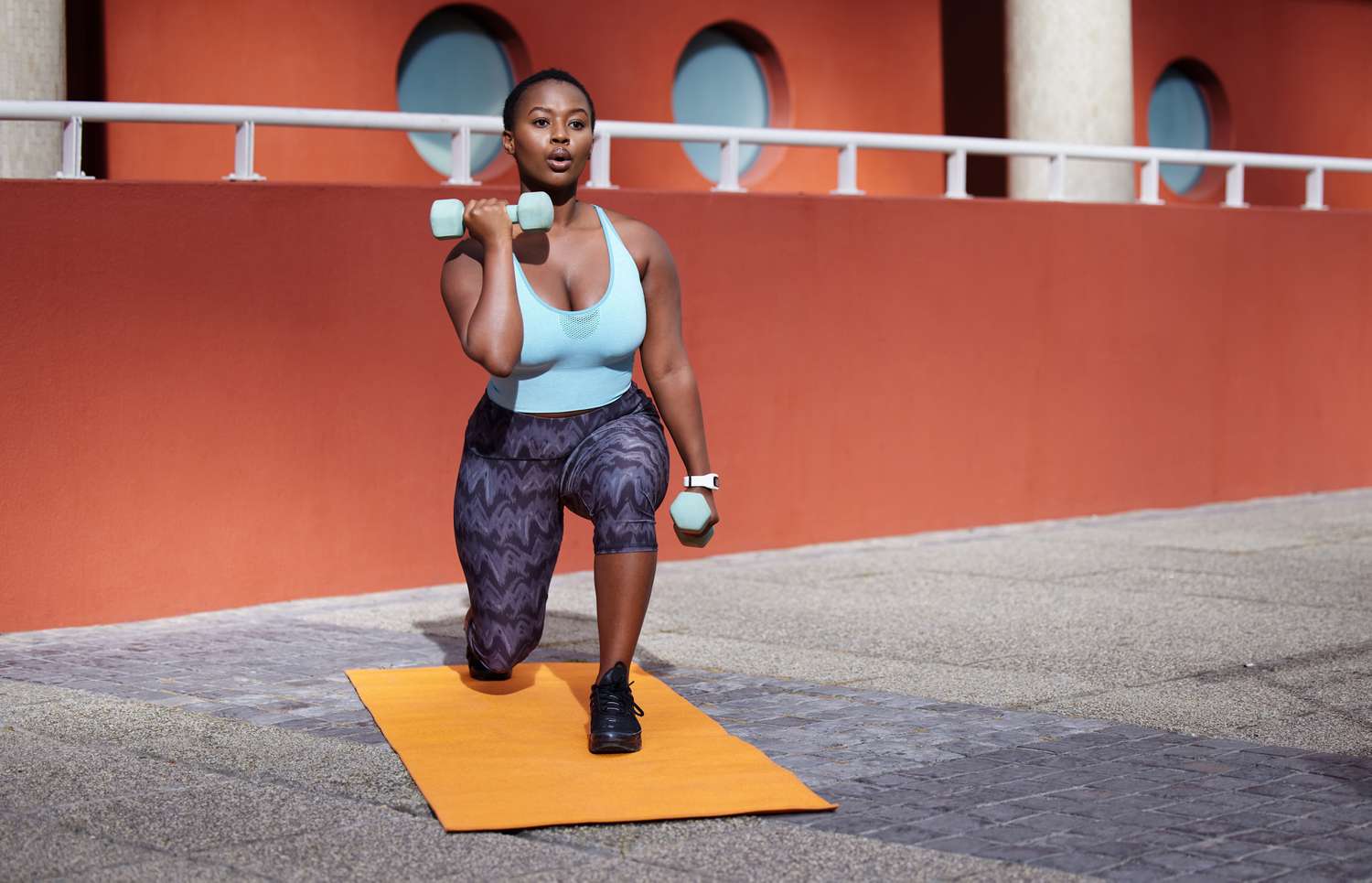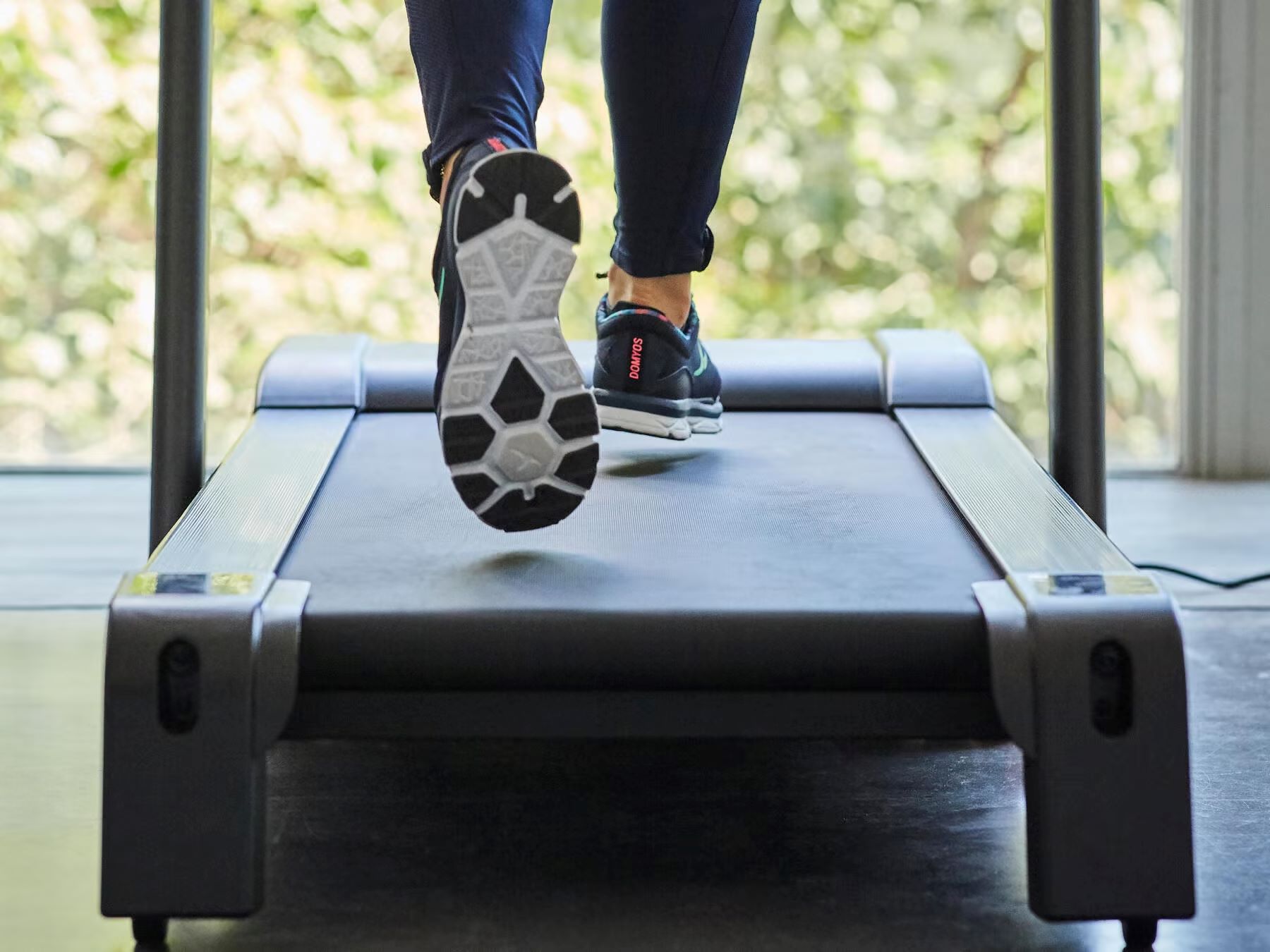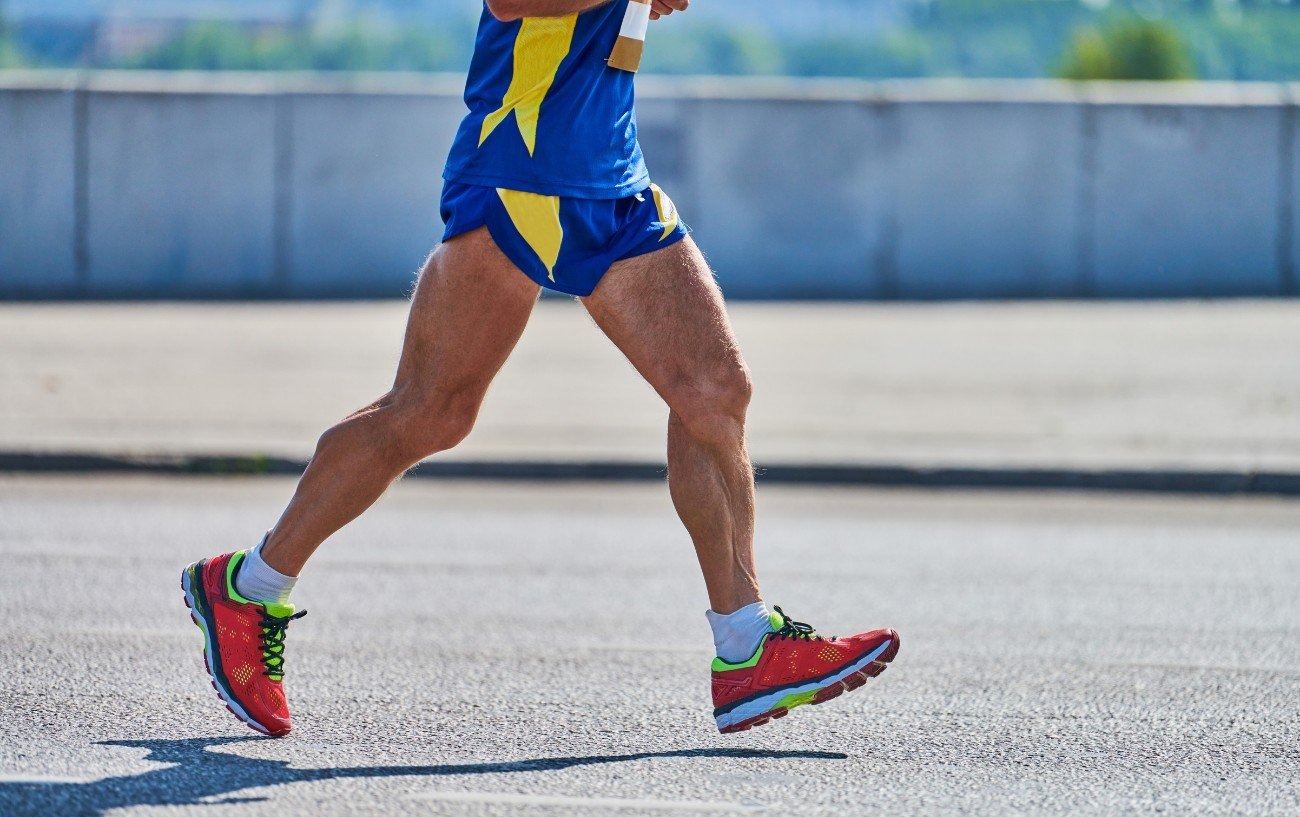Home>Misc>Featured>How Long Should A High Intensity Interval Training Workout Last


Featured
How Long Should A High Intensity Interval Training Workout Last
Modified: March 2, 2024
Learn how long high intensity interval training workouts should be for maximum results. Get expert tips and advice on featured workouts with our comprehensive guide.
Introduction
Welcome to the world of High Intensity Interval Training (HIIT), a workout method that has gained significant popularity in recent years. Whether you are a fitness enthusiast looking to amp up your training routine or a beginner exploring different exercise options, HIIT offers a challenging and effective workout that can yield impressive results in a shorter amount of time.
HIIT involves alternating periods of high-intensity exercise with short periods of rest or active recovery. This training method has been shown to improve cardiovascular fitness, burn calories, and increase metabolic rate, making it a go-to choice for those aiming to maximize their workout efficiency.
In this article, we will explore various factors that can impact the duration of a HIIT workout, as well as provide guidelines for determining the ideal length of your sessions. Whether you have only a few minutes to spare or are willing to push your limits with longer workouts, we will offer recommendations based on your fitness level.
To ensure you get the most out of your HIIT workouts, we will also provide tips for maximizing efficiency and effectiveness. From structuring your workout routine to incorporating proper warm-up and cooldown techniques, we will cover everything you need to know to make the most of your training sessions.
So, if you’re ready to take your fitness journey to the next level, let’s dive in and explore the world of HIIT together!
What is High Intensity Interval Training (HIIT)?
High Intensity Interval Training (HIIT) is a workout method that involves short bursts of intense exercise followed by periods of rest or active recovery. Unlike traditional steady-state cardio exercises, such as jogging or cycling at a consistent pace for an extended period of time, HIIT focuses on delivering maximum effort in a condensed timeframe.
The key principle behind HIIT is to push your body to its limits during the high-intensity intervals, causing it to work harder and burn more calories in a shorter amount of time. These high-intensity intervals are typically followed by brief periods of recovery, allowing the body to catch its breath and prepare for the next burst of intensity.
One of the defining characteristics of HIIT is its flexibility. It can be applied to a variety of exercises, including running, cycling, bodyweight exercises, and even swimming. This versatility enables individuals of different fitness levels to tailor their HIIT workouts to their specific needs and preferences.
Another advantage of HIIT is its ability to stimulate the body’s metabolism, causing it to continue burning calories even after the workout has ended. This phenomenon, known as the “afterburn effect” or excess post-exercise oxygen consumption (EPOC), can lead to additional calorie burn for up to 24 hours post-workout.
Furthermore, HIIT has been shown to improve cardiovascular fitness, increase muscular endurance, and support fat loss. It helps build lean muscle mass and improves insulin sensitivity, making it a valuable training method for those aiming to improve their overall health and fitness.
With its time-efficient nature and wide range of benefits, HIIT has become a popular choice for individuals with busy schedules who want to maximize their workout effectiveness in limited time frames. Whether you’re a beginner or an experienced athlete, incorporating HIIT into your fitness routine can help elevate your performance and achieve your fitness goals.
Benefits of High Intensity Interval Training (HIIT)
High Intensity Interval Training (HIIT) offers a multitude of benefits that make it a popular and effective workout method for individuals of all fitness levels. Here are some key advantages of incorporating HIIT into your fitness routine:
- Efficient calorie burn: HIIT workouts are known for their ability to burn a significant amount of calories in a shorter amount of time. The intense bursts of exercise followed by shorter rest periods help elevate your heart rate, boosting your metabolism and calorie burn during and after the workout.
- Time-saving: Busy schedules often hinder people from committing to long workout sessions. HIIT comes to the rescue by delivering an intense and effective workout within a shorter timeframe. With HIIT, you can achieve the same benefits of a longer workout in just 20-30 minutes.
- Improved cardiovascular fitness: HIIT workouts challenge your cardiovascular system by pushing it to its limits during the high-intensity intervals. This improves your endurance, increases your lung capacity, and enhances your overall cardiovascular fitness.
- Increased metabolic rate: HIIT triggers the “afterburn effect” or excess post-exercise oxygen consumption (EPOC), causing your body to continue burning calories even after the workout is over. This elevated metabolic rate can last up to 24 hours, leading to greater calorie burn throughout the day.
- Muscle building and toning: While HIIT primarily focuses on cardiovascular fitness, it also helps in building lean muscle mass. The intensity of the workouts stimulates the growth and development of muscles, leading to improved strength and a more toned physique.
- Versatile and adaptable: HIIT can be customized to suit various fitness levels and preferences. Whether you prefer bodyweight exercises, cardiovascular activities like running or cycling, or a combination of different exercises, HIIT can be tailored to accommodate your specific needs and goals.
- Increased insulin sensitivity: HIIT has been shown to improve insulin sensitivity, making it particularly beneficial for individuals with prediabetes or type 2 diabetes. By improving insulin sensitivity, HIIT helps regulate blood sugar levels and can assist in managing diabetes.
These benefits make HIIT a powerful and effective training method for individuals looking to optimize their workouts, achieve their fitness goals, and improve overall health and well-being. Whether you’re short on time or simply want to challenge yourself with a more intense workout, incorporating HIIT into your routine can deliver remarkable results.
Factors That Affect the Duration of HIIT Workouts
The duration of a High Intensity Interval Training (HIIT) workout can vary depending on several factors. Understanding these factors can help you determine the optimal length of your HIIT sessions. Here are some key factors that can influence the duration of your HIIT workouts:
- Fitness level: Your current fitness level plays a significant role in determining the duration of your HIIT sessions. Beginners may start with shorter workouts to allow their bodies to adapt gradually, while more experienced individuals may be able to handle longer and more intense sessions.
- Intensity: The intensity of your HIIT exercises can affect how long you can sustain them. Higher intensity exercises may require shorter intervals, while moderate intensity exercises can be performed for longer durations.
- Rest and recovery: The duration and frequency of rest or recovery periods between intervals can impact the overall length of your HIIT workout. Shorter rest periods can create a more intense workout, while longer rest periods allow for more recovery time and can enable you to sustain the workout for a longer duration.
- Workout structure: The structure of your HIIT workout, such as the number of intervals, repetitions, and exercises performed, can influence its duration. Including more intervals or exercises within a workout can extend the overall length.
- Time availability: Your personal schedule and time constraints are important considerations when determining the duration of your HIIT sessions. If you have limited time available, you may opt for shorter, more intense workouts. Conversely, if you have more time to spare, you can incorporate longer sessions.
- Goals: The specific goals you have for your HIIT workouts can influence their duration. If your primary goal is fat loss or cardiovascular endurance, shorter and more intense sessions may be suitable. On the other hand, if you prioritize muscle building and strength development, longer sessions may be required.
- Recovery capabilities: Your individual recovery capabilities and tolerance to intense exercise can dictate the duration of your HIIT workouts. It’s important to listen to your body and allow for adequate recovery between sessions to prevent overtraining and injury.
Considering these factors and finding the right balance is key to designing an effective and sustainable HIIT program. Assess your fitness level, establish your goals, and tailor your HIIT workouts accordingly. Remember, the duration of your HIIT sessions can be adjusted over time as your fitness level progresses and you become more comfortable with the exercises.
Guidelines for Determining the Length of HIIT Workouts
When it comes to determining the length of High Intensity Interval Training (HIIT) workouts, it’s important to consider certain guidelines that can help ensure effectiveness and safety. While the duration can vary depending on individual factors and preferences, the following guidelines can serve as a starting point:
- Beginner level: If you’re new to HIIT or have a lower fitness level, it’s recommended to start with shorter sessions. Aim for a total workout time of around 10-15 minutes, including warm-up and cooldown periods. Gradually increase the duration as your fitness improves and you become more comfortable with the exercises.
- Intermediate level: For those with some experience or moderate fitness levels, a HIIT workout duration of around 15-25 minutes can be suitable. This allows for a sufficient balance between intensity and recovery while providing an effective workout.
- Advanced level: Individuals with a higher fitness level or more experience can opt for longer HIIT sessions. Duration of 25-40 minutes can be considered, allowing for more intervals or exercises to be included in the workout.
- Work-to-rest ratio: A general guideline for work-to-rest ratio in HIIT workouts is 2:1 or 1:1. This means that for every high-intensity interval, you have an equal or slightly lower duration of rest or active recovery. Adjust the ratio based on your fitness level, goals, and personal preferences.
- Frequency: It’s recommended to perform HIIT workouts 2-3 times per week, with rest days in between to allow for adequate recovery. Rest and recovery are crucial for optimal results and preventing overtraining. On the non-HIIT days, you can engage in other forms of exercise or low-intensity activities.
- Listen to your body: Pay attention to how your body responds to HIIT workouts. If you experience excessive fatigue, muscle soreness, or other signs of overexertion, it may be a sign to decrease the duration or intensity of your sessions. It’s important to prioritize safety and listen to your body’s signals.
These guidelines are not set in stone and can be adjusted based on individual factors and goals. Remember, it’s essential to find a balance that challenges you while allowing for proper recovery. Gradually increase the duration and intensity of your HIIT workouts as your fitness level improves and your body adapts to the demands of high-intensity exercise.
How Long Should a High Intensity Interval Training Session Last?
The ideal duration of a High Intensity Interval Training (HIIT) session can vary depending on individual factors and goals. While there is no one-size-fits-all answer, there are general recommendations to consider when determining the length of your HIIT workouts.
A common range for a HIIT session is typically between 10 to 40 minutes. This includes the warm-up, high-intensity intervals, rest or active recovery periods, and cooldown. However, the specific duration within this range will depend on various factors, such as fitness level, intensity, workout structure, and time availability.
For beginners, it’s advisable to start with shorter sessions, aiming for around 10-15 minutes of total workout time. This provides enough time to warm up, perform a few intervals, and conclude with a cooldown. Gradually increase the duration as your fitness level improves and you become more comfortable with the exercises.
Intermediate individuals can aim for HIIT sessions lasting 15-25 minutes. This allows for a more balanced workout that includes an adequate number of intervals and sufficient recovery time. Intermediate-level participants may also increase the intensity of their workouts to further challenge themselves.
Advanced individuals with a higher fitness level or more experience can consider longer HIIT session durations, ranging from 25-40 minutes. This extra time allows for additional intervals, variations in exercises, or increased intensity. However, it’s essential to ensure proper form and take adequate rest to prevent overexertion and reduce the risk of injuries.
Remember that the duration of a HIIT session is not the sole factor determining its effectiveness. The quality of your workout matters more than the length. Focus on giving your best effort during the high-intensity intervals and maintaining proper form throughout the exercises.
Additionally, it’s important to listen to your body and avoid overtraining. If you feel excessively fatigued, experience prolonged muscle soreness, or notice a decline in performance, it might be a sign to reduce the duration or intensity of your HIIT sessions. Recovery is crucial for progress and preventing injury.
Ultimately, the duration of a HIIT session should be determined based on your individual goals, fitness level, time availability, and personal preferences. Experiment with different lengths to find what works best for you, and feel free to adjust as you progress and adapt to the demands of HIIT training.
Recommended HIIT Workout Durations for Different Fitness Levels
When it comes to High Intensity Interval Training (HIIT), the duration of your workouts should be adjusted based on your fitness level. Here are some general guidelines for recommended HIIT workout durations based on different fitness levels:
Beginner Level: If you are new to HIIT or have a lower fitness level, it is recommended to start with shorter workout durations. Aim for sessions that last around 10-15 minutes, including warm-up and cooldown periods. Begin with shorter intervals of high-intensity exercises, followed by sufficient rest or active recovery periods. Gradually increase the duration and intensity of your workouts as your fitness level improves.
Intermediate Level: For those with some experience or moderate fitness levels, HIIT workout durations of 15-25 minutes are suitable. This duration provides enough time to perform a sufficient number of intervals while maintaining intensity. Focus on maintaining proper form and pushing yourself during the high-intensity intervals, and utilize rest or active recovery periods effectively.
Advanced Level: Individuals with a higher fitness level or more experience can consider longer HIIT sessions lasting 25-40 minutes. This duration allows for additional intervals, exercise variations, or increased intensity. However, it is important to ensure proper recovery and avoid overexertion. Tailor the workout to your capabilities and consider incorporating more challenging exercises to keep pushing your limits.
Remember, these recommendations are not strict rules, and you can always adjust the duration based on your personal goals, preferences, and time availability. It is important to find a balance that challenges you while also allowing for adequate recovery and injury prevention.
Additionally, it is worth noting that the intensity of your HIIT workouts is just as important as the duration. Proper form, effort, and focus during the high-intensity intervals will have a significant impact on your results. It is recommended to consult with a fitness professional or trainer to ensure you are performing exercises correctly and safely.
This general guideline can serve as a starting point, but it’s important to listen to your body and make adjustments as needed. Every individual is unique, and what works best for one person may not be suitable for another. Pay attention to how your body responds to different durations and adjust accordingly to achieve optimal results and progress in your fitness journey.
Tips for Maximizing HIIT Workout Efficiency and Effectiveness
High Intensity Interval Training (HIIT) can be an incredibly effective workout method for achieving your fitness goals. To get the most out of your HIIT workouts, here are some tips to maximize efficiency and effectiveness:
- Proper warm-up: Begin your HIIT session with a dynamic warm-up to prepare your muscles and joints for the intense exercise ahead. Incorporate exercises such as jumping jacks, lunges, and arm circles to increase blood flow, loosen up your body, and enhance performance.
- Intense bursts of effort: During the high-intensity intervals, give it your all and push your limits. Focus on maintaining proper form, engaging the targeted muscles, and working at a level that challenges you. The key is to exert maximum effort in a short period of time.
- Utilize proper rest and recovery: Make the most of your rest or active recovery periods between intervals. Use this time to catch your breath, lower your heart rate, and prepare for the next round of intense exercise. Ensure you allow yourself enough recovery time to maintain the quality of your high-intensity intervals.
- Variety in exercises: Incorporate a variety of exercises into your HIIT workouts to engage various muscle groups and avoid boredom. Mix cardio exercises like sprinting or cycling with bodyweight movements like squats, push-ups, or burpees to target different areas of your body and keep your workouts exciting.
- Progressive overload: Continuously challenge yourself and promote improvement by gradually increasing the intensity, duration, or complexity of your HIIT workouts over time. This progressive overload helps prevent plateauing and ensures continued progress and adaptation.
- Proper hydration: Drink plenty of water before, during, and after your HIIT workouts to stay hydrated. As HIIT is intense and causes increased sweating, it’s crucial to replenish fluids to maintain performance and prevent dehydration.
- Listen to your body: Pay attention to how your body feels and adjust your workouts accordingly. If you experience pain, dizziness, or extreme fatigue, take a break and rest. Pushing yourself too hard can lead to injuries and burnout. It’s important to prioritize safety and recovery.
- Consistency: Regularity is key to seeing progress in your fitness journey. Aim to perform HIIT workouts 2-3 times per week consistently. This will allow your body to adapt and improve cardiovascular fitness, strength, and endurance over time.
By incorporating these tips into your HIIT routine, you can optimize your workouts for maximum efficiency and effectiveness. Remember that everyone is unique, so feel free to make adjustments based on your individual needs and preferences. If you’re new to HIIT or have any health concerns, consult with a fitness professional or healthcare provider before starting.
Conclusion
High Intensity Interval Training (HIIT) is a powerful workout method that offers numerous benefits for individuals of all fitness levels. By incorporating short bursts of intense exercise followed by rest or active recovery periods, HIIT allows you to maximize your workout efficiency in a shorter amount of time. Whether your goal is to improve cardiovascular fitness, burn calories, build muscle, or enhance overall health and well-being, HIIT can be a valuable addition to your fitness routine.
When determining the duration of your HIIT workouts, it’s important to consider factors such as your fitness level, intensity, workout structure, time availability, and goals. Beginners may start with shorter sessions and gradually increase the duration as their fitness improves. Intermediate and advanced individuals can aim for longer sessions, while maintaining proper form and allowing for sufficient recovery.
To ensure the effectiveness of your HIIT workouts, keep in mind some key tips. Proper warm-up and cooldown, intense bursts of effort, utilization of rest and recovery, variety in exercises, progressive overload, hydration, and listening to your body are essential factors to maximize efficiency and prevent injury.
Ultimately, finding the right balance and tailoring your HIIT workouts to your specific needs and goals is paramount. Regular consistency and dedication will yield the best results over time. Remember to consult with a fitness professional or healthcare provider if you are new to HIIT or have any concerns regarding your health.
So, are you ready to take on the challenge of HIIT? Start incorporating this time-efficient and effective training method into your fitness routine and experience the remarkable benefits it can provide. Push yourself, enjoy the intensity, and watch as you achieve your fitness goals through the power of HIIT!









